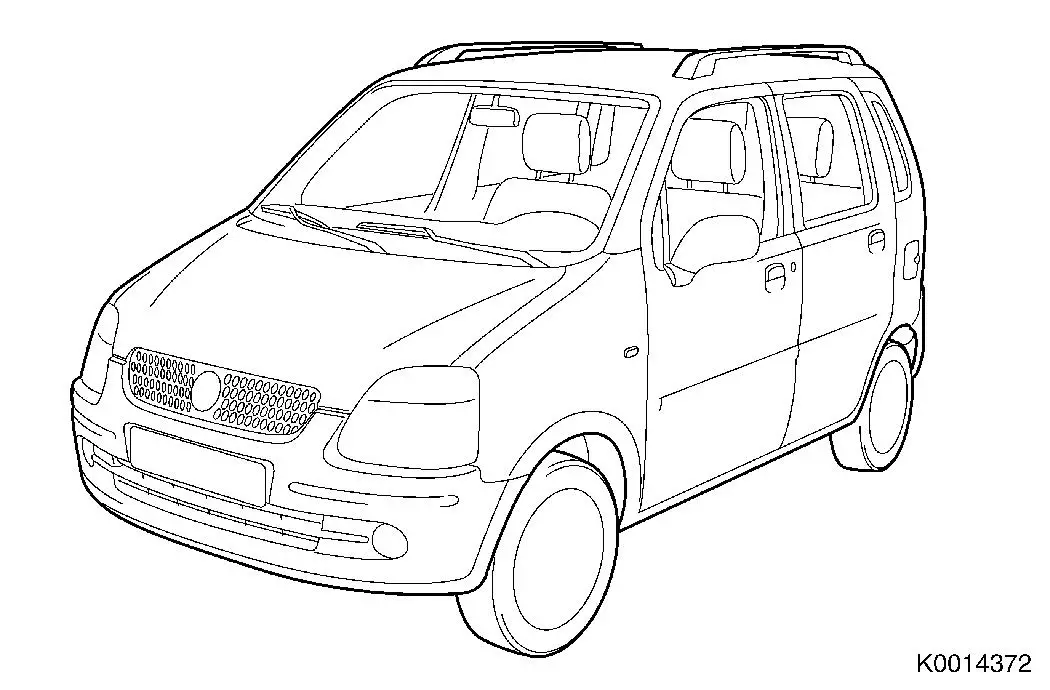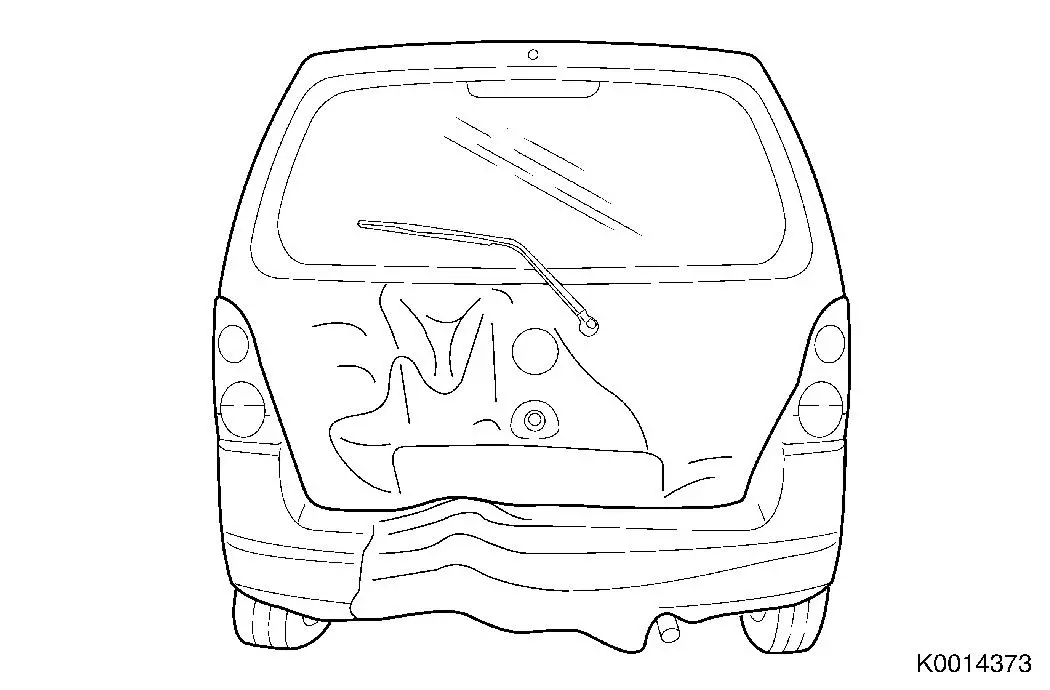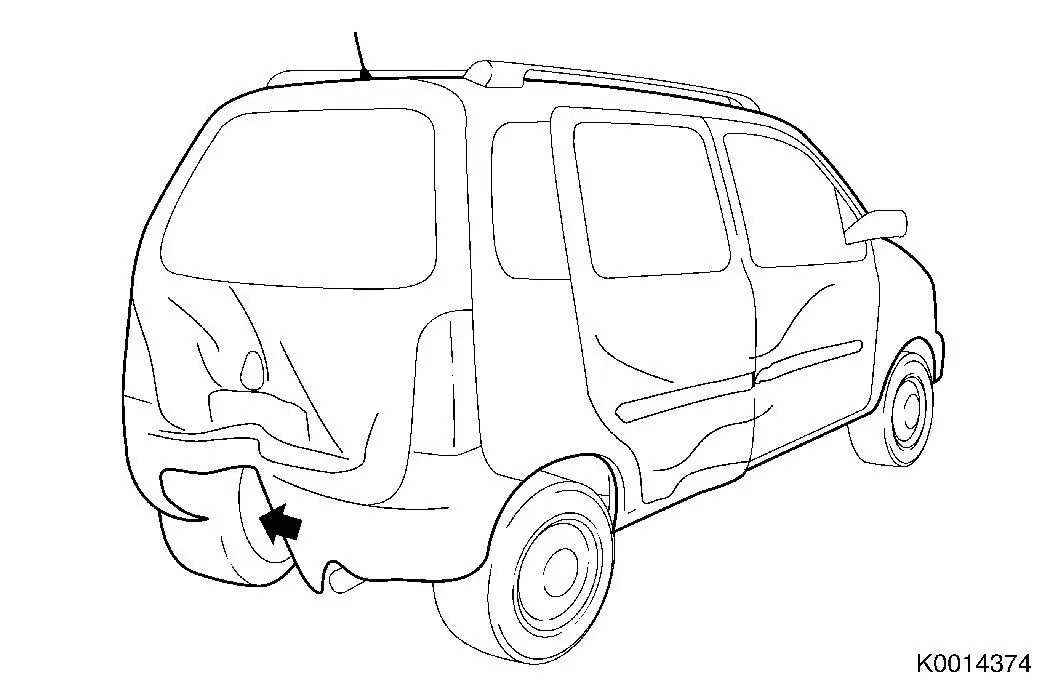|
Damage assessment/damage survey
The following documentation describes damage assessment of a
vehicle involved in an accident! The work required during collision
repair to ensure traffic and operational safety focuses on work on
the body. The assessor must analyse the body damage very closely as
there could be deformation of bolted or welded components as well
as load-bearing or supporting structures. Thus, damage differs not
only as regards repair methods, but also as regards cost.
Through visual inspection of external damage, the assessor can
draw conclusions regarding the scope of damage. In addition to the
large, obvious deformations, the following points are to be assess
through visual inspection (note light reflection), sampling and the
reading of measuring instruments:
- Compare the reference value and the actual value of the axle
geometry for large damage. For any vehicle, visual measurement
provides an objective conclusion regarding the condition of vehicle
components.
- Compare the reference value and the actual value of the
bodywork for large damage. Electronic measurement provides an
objective conclusion regarding the extent of vehicle damage.

- Check gap measurements at the bonnet, doors, boot lid/tailgate,
wings and adjascent components. See current TIS 2000.
- Assess the roof panelling above the B-pillars for retraction
and deformation, dents and dints – especially on vehicles
with sunroof, roof rail and/or panoramic roof.
- Examine resistance spot welded steel plates in the door opening
frames for buckling or gaping (pull off rubber door seal).
- Visually inspect the longitudinal member frame for creases,
buckling, dents, cracks or retraction.
- Assess the vehicle underbody while raised on a hydraulic
lift.
- Check the luggage compartment floor/floor panel for crease
formation (from the luggage compartment outward) by removing the
floor cover.
- Visually inspect the seam seals or adhesive beads for
bursting.
- Visually inspect the shell for flaking and cracking in the
paintwork.
Nowadays, a comprehensive damage assessment with exact
calculations of intermediate or extensive damage is only possible
if the assessor has exact knowledge of the vehicle design.
Mechanics must also know the most important points of the design
and which tools and repair techniques are required for repair work.
Technically fault-free repair is not possible without measuring and
alignment equipment.
- See the instructions in the Service Literature
- Abide by legal regulations and technical guidelines
Repair techniques
There is often no precisely laid out procedure for repairing
deformations at the thresholds. Often, there are different methods
that can be used to hammer out or replace a part so that the
damaged vehicle is once again in an acceptable condition. The
assessor must use his or her experience, and preferably the advice
of the workshop foreman, to determine the most economical and
logical repair technique. The manufacturer's instructions must be
followed during this work.
Measurement and dimensional accuracy of repair
work
There is a large number of different measuring and checking
systems for collision repair work. These vary from simple diagonal
measurement with the variable measuring rod to checks using modern
computerised measuring techniques. Maintaining the specified
dimensions is fundamental to fault-free repair. For this reason,
certain measuring and alignment systems have been approved by the
vehicle manufacturer.
Dimensional accuracy is first obtained when:
- there is unforced screwing with the right angle retainers,
- the measuring tips have assumed the correct position,
- the gap width adjuster is closed,
- the damaged zone is reshaped into its original form where it
abuts other components,
- there is no voltage in the damaged area.
Note: The pulling and
alignment of body components, side members and crossmembers may
only be done in a cold state!
Example of a damage survey
For older vehicles and/or costly repair work, the
assessor must check whether the total costs exceed the replacement
value of the vehicle. If this is the case, the vehicle may be
written off as a total loss if comprehensive insurance applies. In
the case of third party liability, however, the replacement value
can be exceeded.
Vehicle owner data:
|
Name:
|
Wolfgang Mustermann
|
|
Street address:
|
Im Nebel 18
|
|
Telephone:
|
06142 – 772891
|
|
Mobile telephone:
|
00000 – 000000
|
|
Fax:
|
06142 – 999998
|
|
E-mail:
|
[email protected]
|
|
Postal address:
|
D – 65428 Rüsselsheim
|
Vehicle data:

|
|
Registration number:
|
GG – WV 000
|
|
Vehicle type:
|
Passenger car
|
|
Manufacturer:
|
Opel
|
|
Model:
|
Agila Elegance
|
|
Engine type/cubic capacity/power:
|
Petrol/OBD
1199 ccm
55 KW
|
|
VIN:
|
WOLOHAF681G000000
|
|
Registration date/model year:
|
11.01.2001
|
|
§ 29 General inspection date
|
January 06
|
|
Emissions check due date:
|
January 06
|
|
Body type:
|
Minivan, 5-door
|
|
Colour:
|
Prestige Blue metallic
|
|
Mileage:
|
40799 km
|
|
Tyre equipment, tread depth:
|
Wheels 4.5 J x 14, Tyres 155/65 R14 75T M+S
|
| |
|
|
|
|
|
|
|
|
|
|
|
| |
|
|
6 mm
|
|
<
|
|
|
7 mm
|
|
| |
|
|
|
|
|
|
| |
|
|
|
|
|
|
|
|
|
|
|
| |
|
|
6 mm
|
|
<
|
|
|
7 mm
|
|
| |
|
|
|
|
|
|
| |
|
|
|
|
|
|
|
|
|
|
|
|
General condition:
|
well looked after
|
|
Damage:
|
none detected
|
|
Vehicle condition:
|
not assessed
|
|
Vehicle documents:
|
The technical data for the vehicle was taken from the vehicle
documents presented. The VIN was compared to that in the
vehicle.
|
|
Equipment – accessories – special accessories
|
see vehicle appraisal
|
|
General:
The specified vehicle is inspected in order to preserve
evidence, survey the damage and calcuate repair costs. Photos taken
of the damage is included with the damage survey, the purpose of
which is to determine the scope of the damage. A copy of the damage
survey is sent to the vehicle owner and the insurance company for
informational purposes.
Cause of loss:
There are no common individual units for cause of loss.
Reference is made to the damage documents.
General condition:
The general condition of the vehicle refers to its age, purpose
and mileage. It is to be assessed as well looked after.
Driveability:
The damaged vehicle is not in a roadworthy, traffic-safe
condition in accordance with Road Traffic Licencing
Regulations.
Damage:
No detectable damage.
Other defects:
None
Description of the damage:
The detectable damage to the vehicle exterior was caused by an
accident or a instantaneous incident that affected the exterior.
Notes on damage: the following areas are to be examined
(example)

|
- Rear window
- Tailgate
- Rear body panel
- Rear panelling
- Luggage compartment floor
- Tail light inserts
- Left rear wheel
- Driver's seat backrest (twisted)
|

|
- Both doors
- B-pillar
- Sill panelling
- Floor (laterally)
- Left rear wheel and rear wheel suspension (arrow)
|
|
Recovery time:
|
14 work days
|
In the local used car market, it must be possible to provide a
similar replacement vehicle for the given time period.
|
Type of damage:
|
Total financial loss
|
The total of the damage-related costs exceeds the replacement
value of the vehicle. This vehicle is not repairable. It is
considered a total financial loss.
|